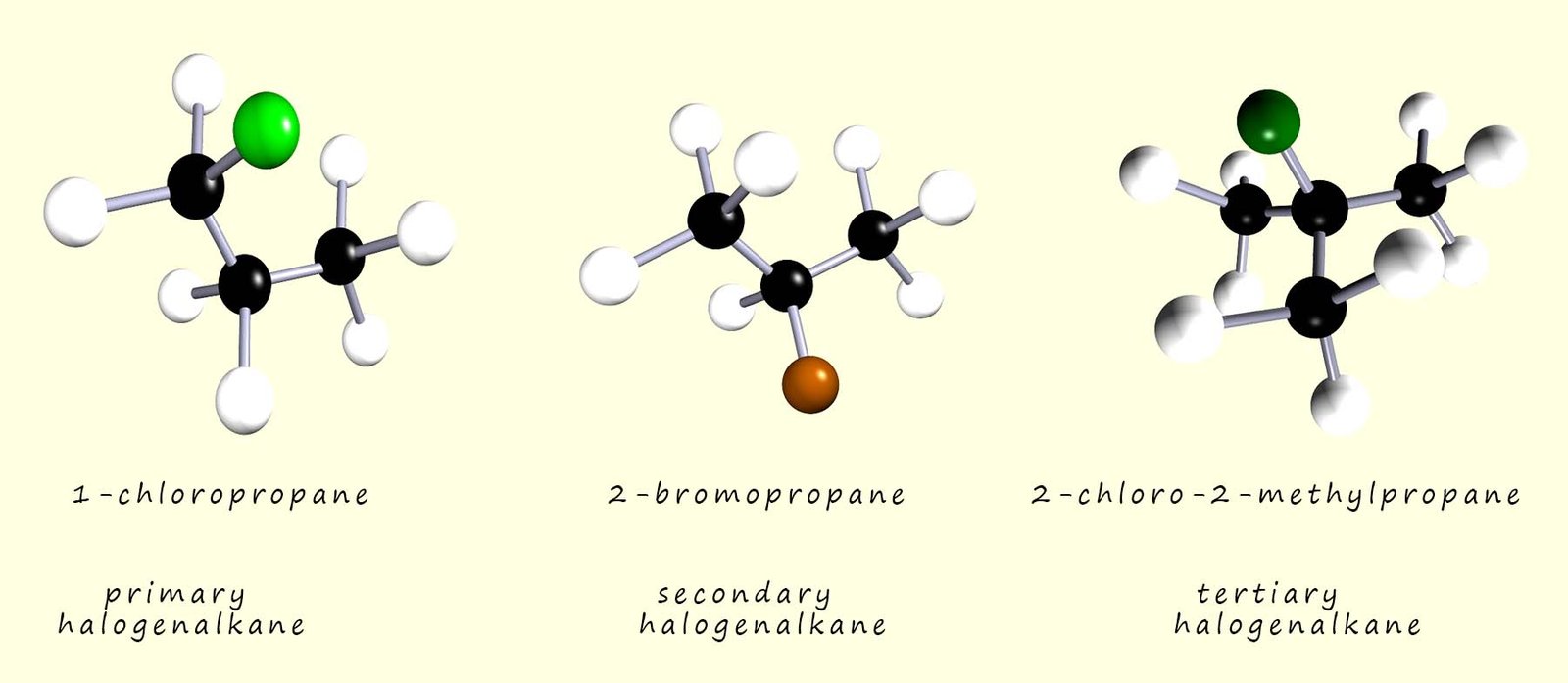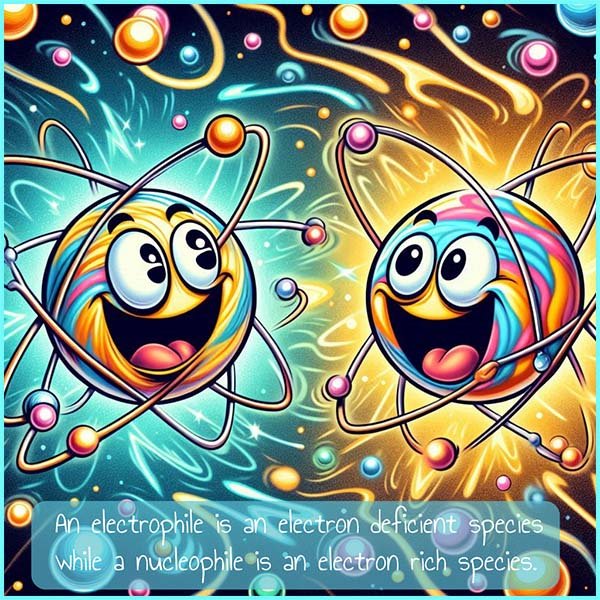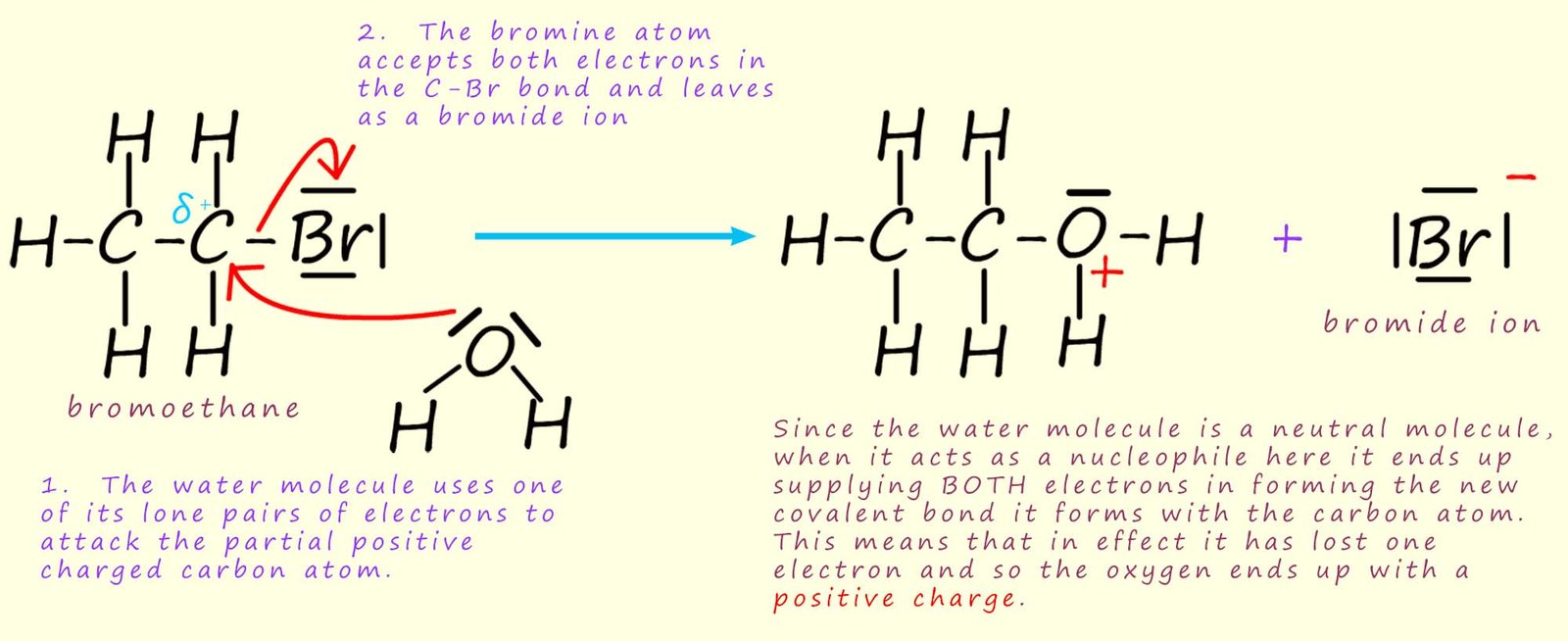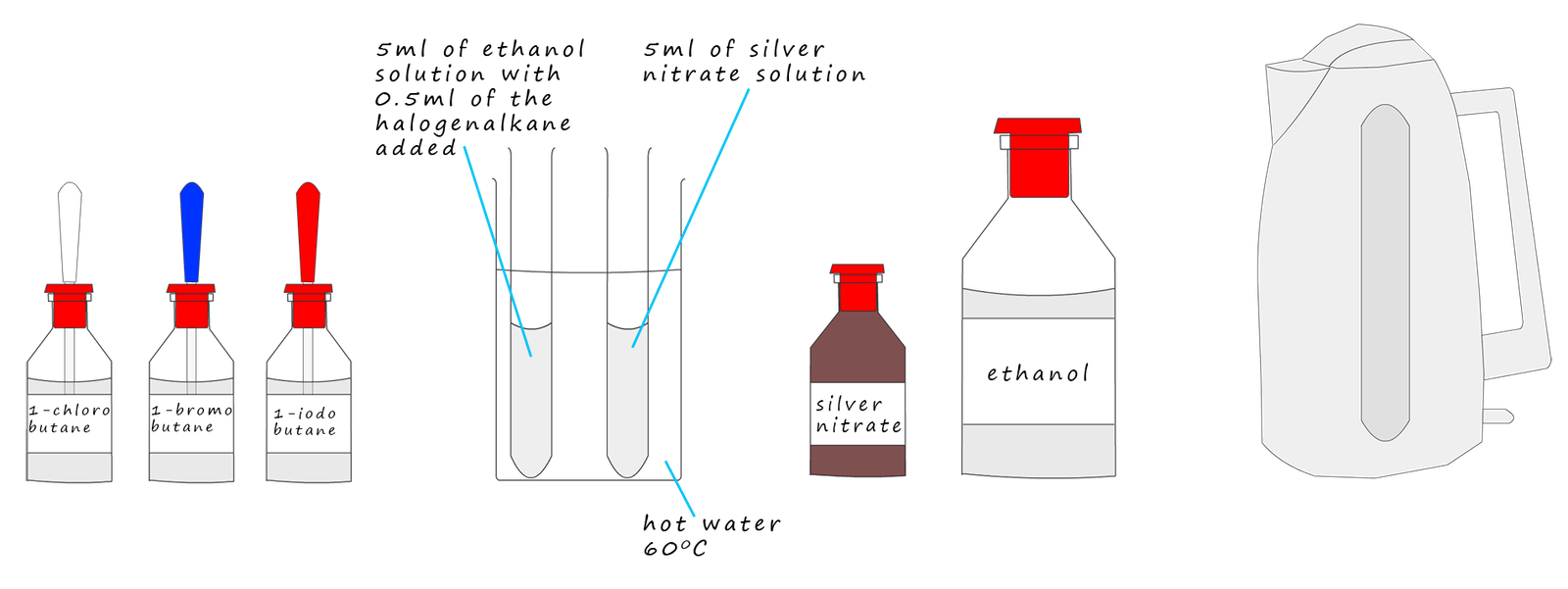
The halogenalkanes form a homologous series of compounds with the general formula CnH2n+1X, where X is one of the halogens (F, Cl, Br or I). Some simple examples of primary, secondary and tertiary halogenalkane molecules are shown below:

The halogens are generally electronegative
elements; which means that the C-X bond in the halogenalkane molecules
will be a polar one with
the carbon atom in the C-X bond having a partial positive charge (δ+)
and the halogen atom having a
partial negative charge (δ-).

A nucleophile is an electron rich species; nucleophiles can be neutral molecules or ions with lone pairs of electrons which they can donate to an electron deficient molecule/atom, that is an electrophile. Examples of nucleophiles include hydroxide ions (OH-), cyanide ions (CN-), ammonia (NH3) and water (H2O). All these molecules, whether charged or neutral are able to act as nucleophiles simply because they have lone pairs of electrons.
The electron deficient carbon atom attached the halogen in a
halogenalkane molecule is
susceptible to attack by
electron rich species; that is nucleophiles with lone
pairs of electrons. The image below shows how a nucleophile can use its lone pair of electrons to remove and ultimately take the place of the halogen in a halogenalkane molecule; that is the nucleophile substitutes for the halogen atom in the halogenalkane molecule.

For more details on the mechanisms of these nucleophilic substitution reactions visit the page on SN1 and SN2 reactions which describes in detail the type of reactions undergone by primary, secondary and tertiary halogenalkane molecules.
It is possible to prepare alcohols by hydrolysing halogenalkanes with water; however the reaction is slow simply because water is not a particularly good nucleophile and the halogenalkanes are barely soluble or not soluble at all in water, so an aqueous ethanol mixture is a better choice as a solvent since the halogenalkanes are soluble in it. This increases the rate of the hydrolysis reaction.
Here the water molecule uses its lone pair of electrons to act as a nucleophile and attack the partially charged carbon atom (Cδ+). In the example below bromoethane is being hydrolysed with water. An intermediate is formed which contains an oxygen atom with a positive charge- an oxonium ion.

To complete the reaction the intermediate ion formed above has a proton (H+) removed from it by a water molecule. Here the water molecule is acting as a base to accept a hydrogen ion (H+) and form the alcohol ethanol and also the oxonium ion or hydroxonium ion (H3O+). This is outlined below.

Note: the hydroxonoium ion (H3O+) is often simply shown as H+ in many equations.

In the hydrolysis reaction of a halogenalkane as shown above we can easily measure the rate of reaction by making use of a reaction you will have seen before, that is the reaction of silver nitrate solution with halide ions (Cl-, Br-, I-) to form white, cream and yellow precipitates of the silver halide. This can be shown as:
Pour the acidified silver nitrate solution into each of the test-tubes and start the stop-clock. Time how long it takes for each of the coloured white, cream and yellow precipitates of the silver halide to form.

As mentioned above the hydrolysis reaction of halogenalkanes with water is a slow one. However due to the decrease in
bond enthalpy of the C-X bond as we descend group 7, we can order the rate of reaction as: